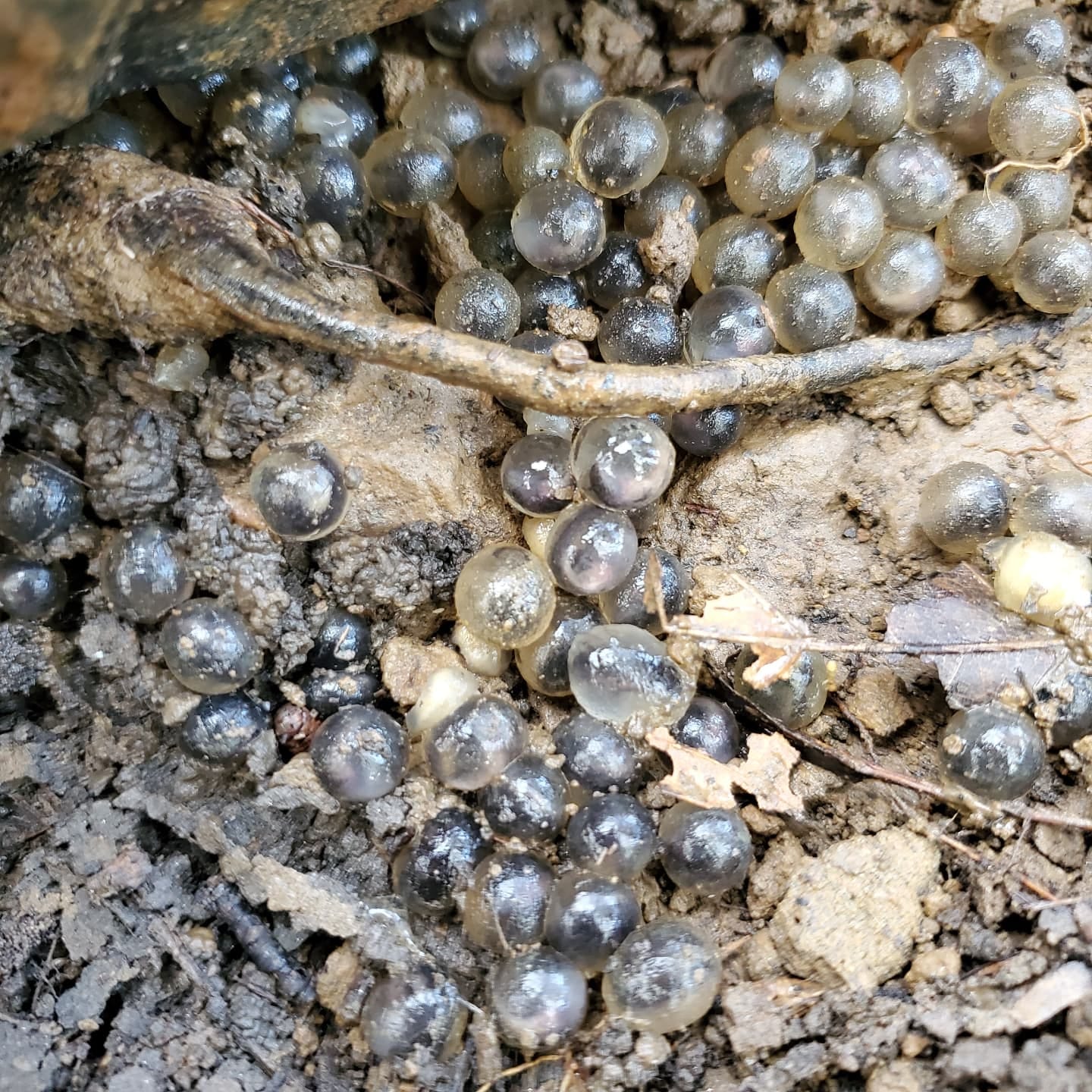With the first frosts of the year occurring, the earlier and earlier nights, and the last of the leaves beginning to drop, our thoughts naturally turn towards winter.
Most people consider our mid-atlantic winters devoid of life and that is a fair assumption based on the witnessable preparations of our deciduous treescape, but life is still all around us – whether hibernating, finding new ways to survive this cold new world, or staging it’s re-emergence.
In some rare cases life is occurring in all of its grandest theater, as is the case with our marbled salamanders (Ambystoma opacum). Each fall, as the weather begins to cool, this native (and nearly statewide) salamander begins to court, mate, and lay their eggs!

Usually depositing these eggs in a covered depression of sorts, their larvae continue to develop as the weather gets colder and colder, eventually hatching from when the winter rains come and submerge them for a few days. Once hatched these larvae, or salamander tadpoles, live out the first part of their lives in vernal pools during the coldest parts of the year!
While this sounds like an extreme adaptation, just think of the enormous advantage this provides them to be able to live and grow while there are few other predators, or competition, sharing their vernal pools with them!
For those interested in more about how the animal world survives (and in some cases, thrives!) through the winter, we recommend Bernd Heinrich’s 2009 book, Winter World: The Ingenuity of Animal Survival.
We also plan on documenting and highlighting the winter life that occurs here at VOF’s Preserve at Bull Run Mountains. So stay tuned and stay curious!